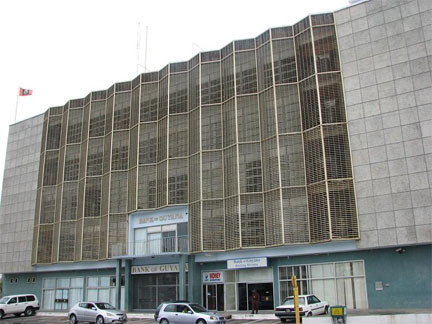by Correspondent
According to the Bank of Guyana which monitors the growth and slump of the economy, it was found that the country’s merchandise trade deficit contracted by 24.3 percent or US$75.9 million to US$236.8 million from US$312.6 million as at the end of June 2014.
This outturn was due to a US$74.5 million reduction in imports and a US$1.4 million increase in export receipts. Total export receipts amounted to US$536.1 million, 0.3 percent more than the US$534.7 million recorded at end-June 2014. This upturn was as a result of higher earnings from rice, “other exports” and timber.
Also, it was revealed that the value of merchandise imports decreased by 8.8 percent or US$74.5 million to US$772.8 million. This outturn was on account of lower imports of intermediate goods as shown in Table VIII. Imports in the “consumption goods” sub-category amounted to US$188.4 million, 0.8 percent or US$1.5 million more than the 2014 corresponding level.
This was mainly due to increases in other durable goods and food for final consumption by US$4.5 million and US$3.3 million respectively.
There were declines in beverages and tobacco, other non-durable goods, motor cars, clothing and footwear and other semi-durable goods by US$2.6 million, US$1.6 million, US$1.3 million, US$0.5 million and US$0.3 million respectively. In the “intermediate goods” sub-category, imports decreased by 18.7 percent or US$90.7 million to US$393.7 million.
This position was as a result of declines in the import value of fuel and lubricants, food for intermediate use, textiles and fabrics and other intermediate goods by US$101.0 million, US$3.5 million, US$0.7 million and US$0.4 million.
However, chemicals and parts and accessories recorded increases of US$13.2 million and US$1.6 million respectively. Additionally, imports in the sub-category “capital goods” increased by 8.6 percent or US$14.8 million to US$186.7 million.
Nearly all types of capital goods recorded an increase, with the most notable being an US$8.7 million increase in building machinery. However, imports for industrial machinery and agricultural machinery saw a decline of US$5.4 million and US$5.2 million respectively.
As for the year 2013, it was noted that the merchandise trade deficit narrowed by 2.3 percent or US$7.2 million to US$304.4 million from US$311.6 million at the end June 2013. This decline was due to a US$68.2 million reduction in imports which more than offset a US$61.4 million contraction in export receipts.
It was found too, that the value of merchandise imports decreased by 7.5 percent or US$68.2 million to US$839.0 million. This outturn was mainly on account of lower imports of consumption, intermediate, and capital goods as shown in Table Three.
Imports in the consumption goods sub-category amounted to US$186.9 million, 7.2 percent or US$14.5 million less than the 2013 corresponding level. All items within this subcategory decreased, with the most notable being a decline in other nondurable goods, and other durable goods of US$5.8 million and US$2.8 million respectively.
In the intermediate goods sub-category, imports declined by 3.3 percent or US$16.1 million to US$476.1 million. This position was mainly due to declines in chemicals, parts and accessories, and textiles and clothing by US$20.5 million, US$8.9 million, and US$0.1 million respectively. However, fuel and lubricants, other intermediate goods and food for intermediate use recorded increases of US$6.9 million, US$3.6 million and US$2.9 million respectively.
Importantly, imports in the sub-category of capital goods declined by 17.7 percent or US$37.0 million to US$171.9 million. Nearly all types of capital goods recorded a decline, with the most notable being a US$17.1 million reduction in agricultural machinery. However, imports for mining machinery saw an increase of US$3.6 million.
When compared to the prior year, statistics revealed that merchandise trade deficit narrowed by US$57.4million to US$317.7 million from US$375.1 million at the end of June 2012. This was however, noted to be an improvement over 2011. It was due to a US$7.0 million increase in exports and a US$50.4 million decrease in imports.
It could be noted that the value of merchandise imports decreased by 5.3 percent or US$50.4 million to US$907.2 million. This outturn was mainly on account of lower imports of consumption, intermediate and capital goods.
Imports in the consumption goods amounted to US$201.4 million. All items except food for final consumption, motor cars, clothing and footwear, and other durable goods increased in value. For intermediate goods, imports decreased by 5.7 percent to US$492.1 million. This position was on account of a 9.6 percent or US$30.0 million decrease in the value of fuel and lubricants imported, as well as a decrease in the value of parts and accessories imported by 20.8 percent or US$11.9 million. Food for intermediate use and chemicals recorded increases of 9.4 percent or US$3.5 million and 43.8 percent or US$12.8 million respectively.






